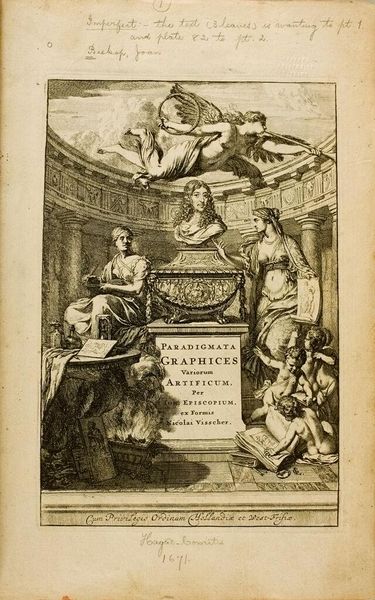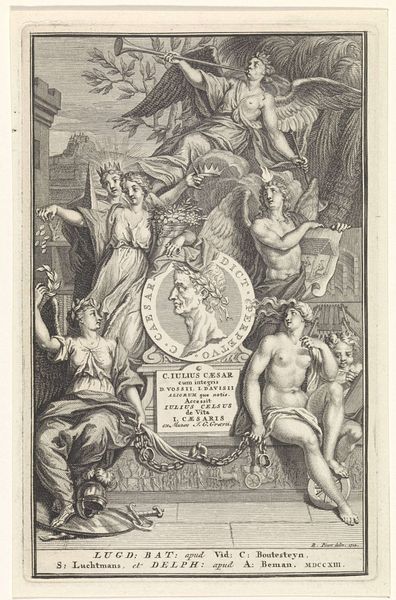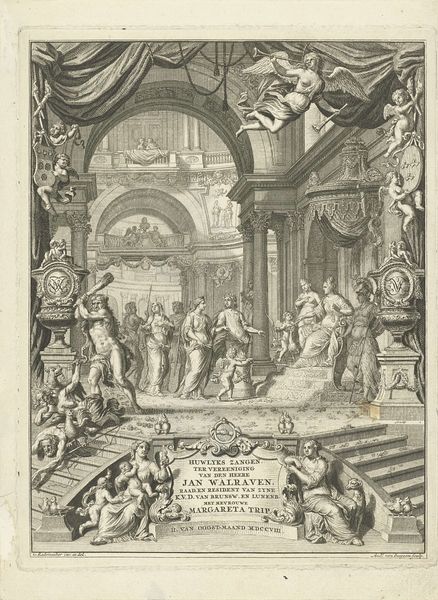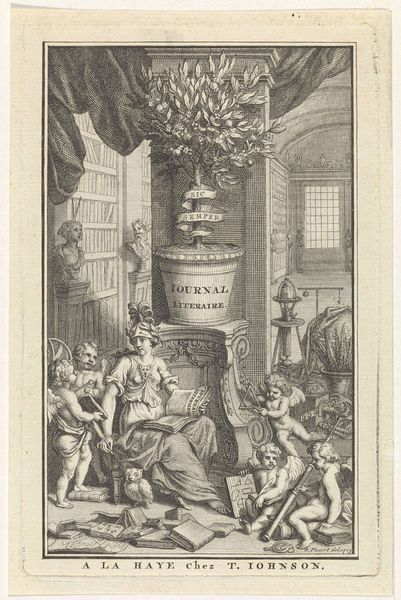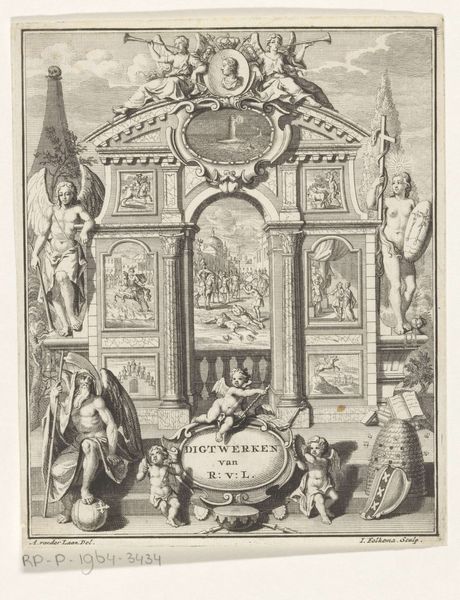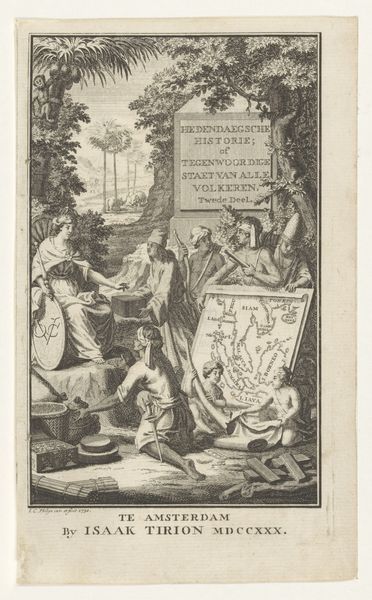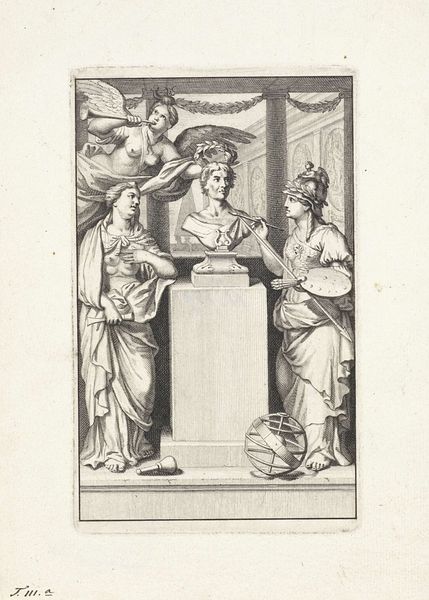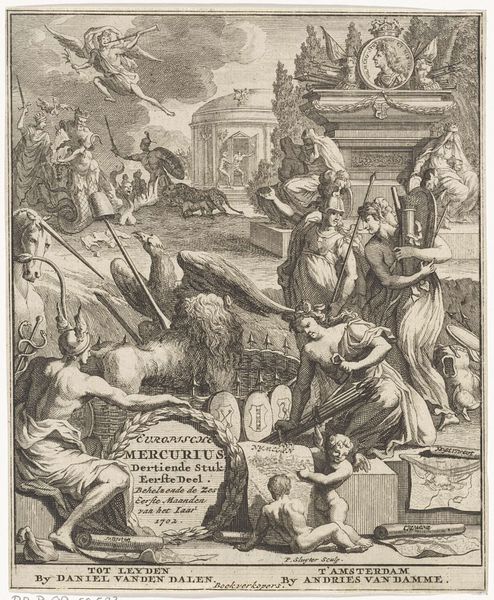
Borstbeeld van Jan de Bisschop geflankeerd door allegorische figuren 1670 - 1747
0:00
0:00
sculpture, engraving
#
portrait
#
allegory
#
baroque
#
pen sketch
#
old engraving style
#
figuration
#
sculpture
#
line
#
history-painting
#
engraving
Dimensions: height 229 mm, width 153 mm
Copyright: Rijks Museum: Open Domain
Curator: This engraving, "Borstbeeld van Jan de Bisschop geflankeerd door allegorische figuren," or "Bust of Jan de Bisschop Flanked by Allegorical Figures," dates to sometime between 1670 and 1747. Editor: The image really does harken back to old engraving styles. Looking at it, I’m struck by how busy it is. It feels packed with figures and detail, almost claustrophobic, despite the classical architecture. Curator: That feeling is amplified when considering the labor invested in producing an image like this. Each line meticulously etched, each character rendered through immense skill and time-consuming effort. This was a highly valued mode of reproducible image-making. Editor: Precisely. Jan de Bisschop, commemorated by the bust at the center, was a lawyer, art collector, and amateur artist who played a pivotal role in promoting the study of classical art. You have the figure of Pictura to the right, and I think Architectura to the left of the bust. Curator: And note how de Bisschop's head appears almost suspended above the title cartouche, promoting Paradigma Graphics and the artistry contained within the Bishop's varied collection. These symbolic framing devices were vital to constructing his artistic identity. The choice of engraving allowed for wider circulation of these ideas through material forms. Editor: Definitely. And it seems the cherubs represent youthful artistic activity inspired by De Bisschop. An angel, with what looks to be a trumpet and laurel above, suggests the lasting impact and importance of his influence. Curator: The contrast between the bust, meant to immortalize de Bisschop, and the more fleeting medium of the engraving offers a rather pointed commentary about materiality. Here, image and reproduction engage with longer considerations about reputation and legacy. Editor: It’s compelling how these carefully constructed allegorical symbols continue to communicate even now, giving us a glimpse into the cultural values placed on art, knowledge, and enduring fame during that period. It is clear that De Bisschop cared a lot about his status and what it represents, to continue into perpetuity. Curator: Absolutely, and it underscores the power of studying images like this not just for their symbolic content but also for how they operated within broader economies of artistic production and cultural promotion. Editor: Thinking about the symbols and cultural messages has opened it up for me in a completely different light; from chaotic to coherent.
Comments
No comments
Be the first to comment and join the conversation on the ultimate creative platform.
